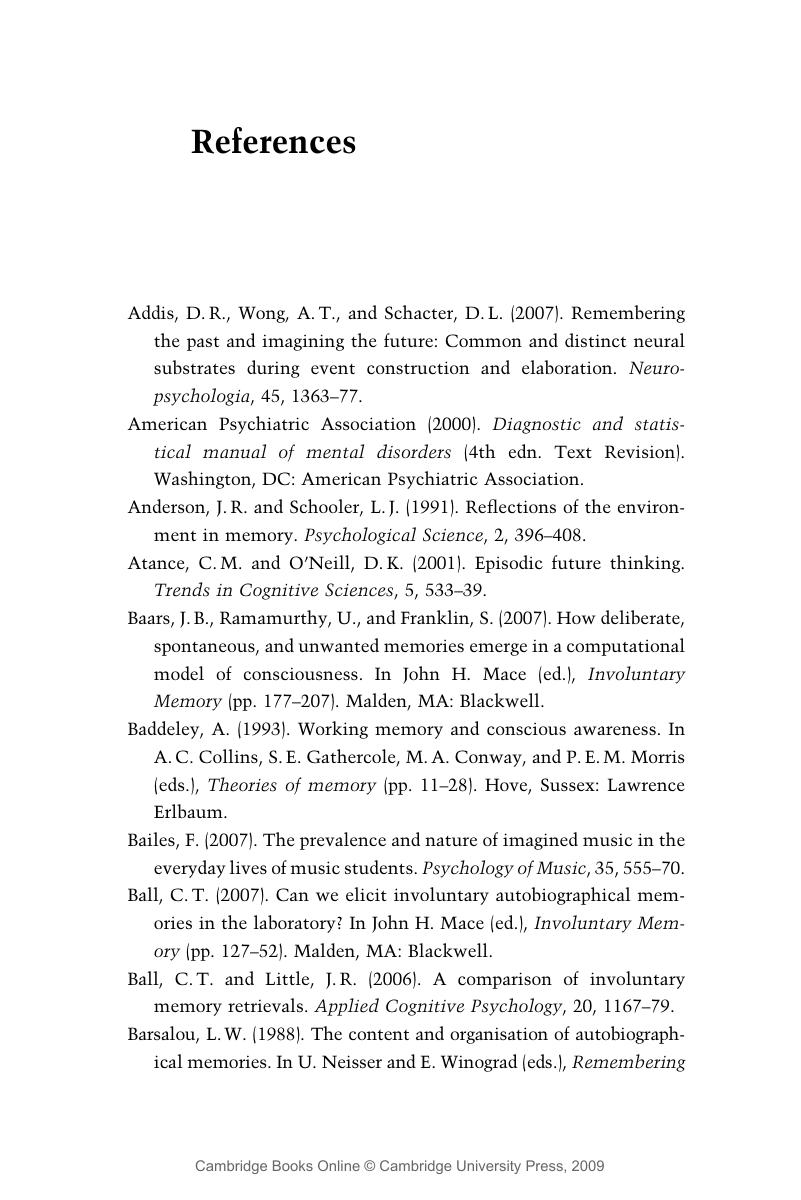Book contents
- Frontmatter
- Contents
- List of figures
- List of tables
- Preface
- 1 Introduction to the unbidden past
- 2 Theoretical backgrounds
- 3 Ways to study the unbidden past
- 4 How special are involuntary autobiographical memories?
- 5 How do they come to mind?
- 6 Differences between involuntary and voluntary autobiographical memories
- 7 Involuntary memories of traumatic events
- 8 Future and past
- References
- Index
- References
References
Published online by Cambridge University Press: 23 June 2009
- Frontmatter
- Contents
- List of figures
- List of tables
- Preface
- 1 Introduction to the unbidden past
- 2 Theoretical backgrounds
- 3 Ways to study the unbidden past
- 4 How special are involuntary autobiographical memories?
- 5 How do they come to mind?
- 6 Differences between involuntary and voluntary autobiographical memories
- 7 Involuntary memories of traumatic events
- 8 Future and past
- References
- Index
- References
Summary

- Type
- Chapter
- Information
- Involuntary Autobiographical MemoriesAn Introduction to the Unbidden Past, pp. 199 - 221Publisher: Cambridge University PressPrint publication year: 2009



